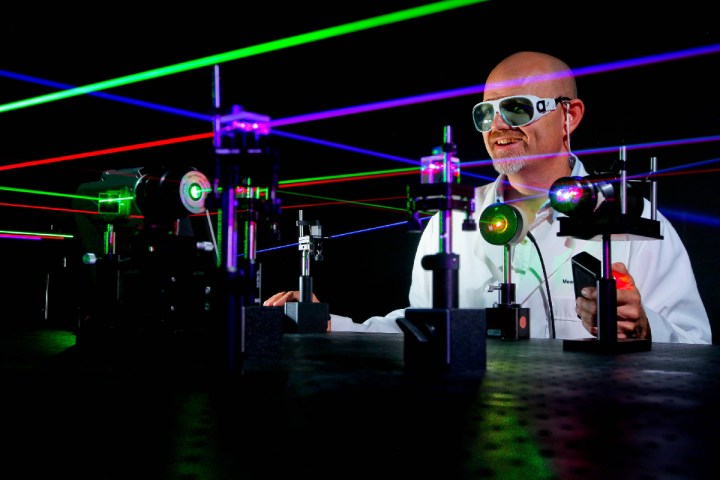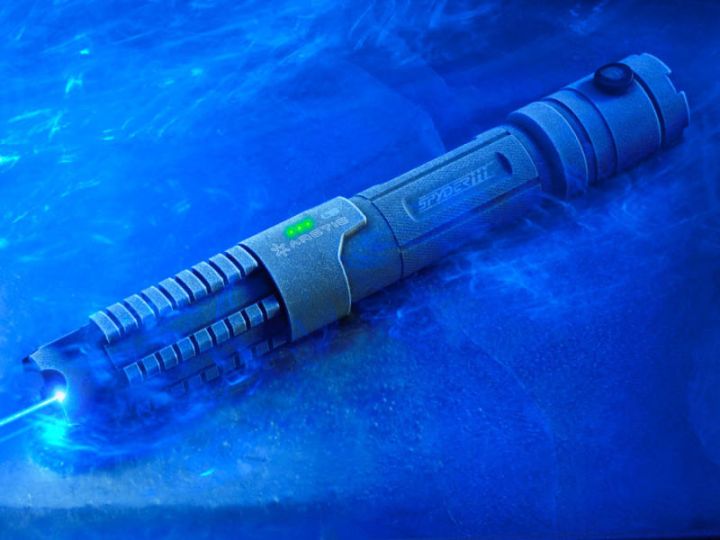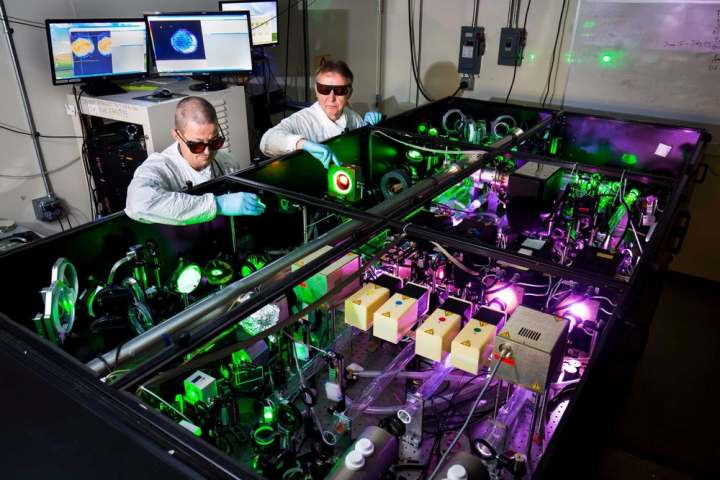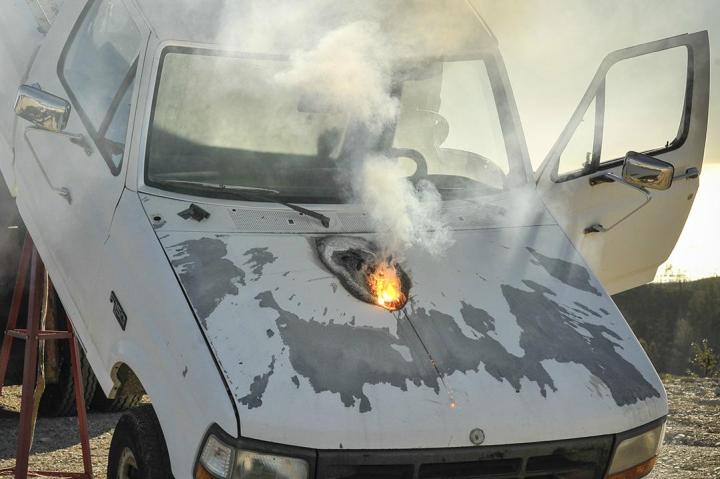
As time goes on and technological progress marches forward, the line between science fiction and reality seems to get increasingly blurry. Case in point? Lasers. They’ve been around for decades, but nowadays they’re starting to look a lot less like the puny little laser pointers of yesteryear and a lot more like the stuff you see in Star Trek. To give you a taste of how far lasers have come, we’ve compiled a list of the most advanced ones on the planet. From lice-zapping lights to high-powered military weapons, here’s our list of planet Earth’s most powerful lasers. Enjoy!
Wicked Lasers Spyder 3 Pro Arctic

The Spyder 3 handheld laser is no real life lightsaber, nor a “laser shotgun”, but it’s definitely not a toy either. This small but formidable laser has enough juice to permanently blind you — and even light certain materials on fire. The included safety glasses make wielding “the most powerful laser legally purchasable” slightly less risky, but we highly recommend not pushing your luck with this one.
University of Nebraska’s Diocles laser

In June of 2017, scientists at the University of Nebraska powered on their ultra-high intensity Diocles laser — a laser that’s reportedly capable of producing light that’s a billion times brighter than light at the surface of the sun. Such intense brightness is created using a fine-tuned compression stage in which the laser is focused into an extremely short, powerful pulse. The potential uses of the university’s new laser are pretty exciting, but for now it operates as a machine of science, helping researchers investigate the relationship between light and matter.
University of Michigan’s Hercules laser

Touted as the “most intense laser in the world,” the Hercules laser is slated to get a lot more intense after receiving a sizable donation from the National Science Foundation. With its pending upgrades, Hercules’ power is expected to increase from 300 terawatts to a possible 1000.
With a higher powered Hercules, the team behind the machine thinks the technology could help shrink down particle accelerators to a “tabletop” size, thereby eliminating the need for multi-acre research facilities like CERN. This would help scientists around the world continue to explore the mysteries of our universe from the comfort of their home labs.
The XFEL: X-ray free electron laser

As of September 1, 2017, the world’s most powerful image-producing X-ray laser is open for business. Europe’s XFEL, as it’s called, is located 125 feet below the northern city of Hamburg, Germany. The laser is housed in a 3.4 kilometer long tunnel, where it is used to observe chemical reactions at the smallest scale, and record them.
Being able to image things at such a small scale has very big implications — whether it be observing materials as they break down to make them stronger; watching bio-molecules to help understand illnesses and create custom drugs to combat them; or using a laser to create intense pressure and heat to help understand processes like those that occur in the Earth’s core.
Lockheed Martin’s Athena modular laser system

The last laser on our list stands apart for a few different reasons: It’s portable, it’s modular, and it can even shoot down airplanes and disable vehicles. That’s right — this laser actually shoots stuff.
In 2015, Lockheed showcased the Athena laser’s destructive capabilities by disabling a small boat, igniting the tail fin of a flying drone, and melting through the engine block of a small truck. Furthermore, the system is so small and lightweight that it can easily be fitted onto existing warships, and in the future, potentially even trucks and tanks.
While a future of war isn’t something anyone wants, this technology may end up being our only defense against interplanetary threats that conventional weapons are too slow to combat, such as asteroids and meteors.



